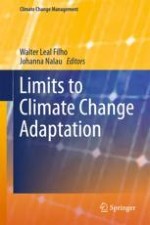2018 | OriginalPaper | Chapter
2. Strategies and Barriers to Adaptation of Hazard-Prone Rural Households in Bangladesh
Authors : G. M. Monirul Alam, Khorshed Alam, Shahbaz Mushtaq, Most Nilufa Khatun, Walter Leal Filho
Published in: Limits to Climate Change Adaptation
Publisher: Springer International Publishing
Activate our intelligent search to find suitable subject content or patents.
Select sections of text to find matching patents with Artificial Intelligence. powered by
Select sections of text to find additional relevant content using AI-assisted search. powered by
